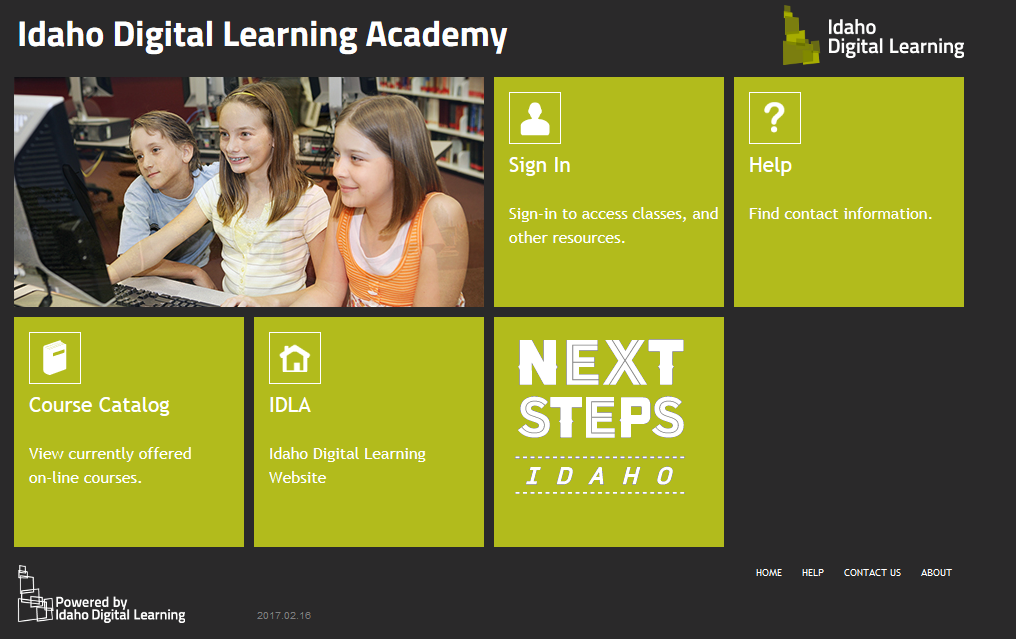AWS Public Sector Blog
Virtual Learning and the Power of Technology for the Future of Learning
Breaking down barriers to opportunity is a top priority for many educational organizations. By expanding learning beyond the confines of a physical classroom, technology helps increase access to courses and level the playing field for students.
For schools and educators, the cloud offers not only cost savings and agility, but also the opportunity to develop breakthroughs in educational models and student engagement. For students, it means access to the resources they need, especially in geographically dispersed areas where access might be limited.
For example, Idaho Digital Learning (IDL), the state-sponsored online school serving K-12 students across all of Idaho, has been an early adopter of cloud in K12 education. Idaho Digital Learning offers an assortment of courses including core curriculum, credit recovery, electives, Dual Credit and Advanced Placement. These courses are offered in Cohort, Flex, and Hybrid formats to accommodate the nearly 27,000 enrolled students’ schedules and learning styles.
Through a strong collaboration between industry, school districts, and the state government, IDL accomplishes its mission to build the pipeline of talent to fill the growing number of STEM (science, technology, engineering and math) jobs, which can be a challenge in a rural state like Idaho.
Idaho Digital Learning and AWS
Idaho Digital Learning has been able to use the power of technology to flexibly, conveniently, reliably, and securely deliver content across school districts by providing virtual learning using AWS.
To be able to provide the critical anytime, anywhere access to smaller schools, Idaho Digital Learning migrated all-in on AWS in 2014. The organization uses Amazon Elastic Compute Cloud (Amazon EC2), Amazon Route 53, Amazon Simple Storage Service (Amazon S3), and Amazon CloudFront to create access and opportunity for all Idaho students and educators through digital learning.
Some of the benefits realized by IDL include:
- Continuity of Operations (no matter the location) – Moving physical locations to a virtualized model shared by districts with multiple failovers provides for always-on access and greater continuity of operations for all users. “Even when faced with incidents, such as a squirrel chewing a line or a snowstorm taking down the power, we were able to provide the services to our students,” said William Dembi, Infrastructure Specialist, Idaho Digital Learning. “The biggest benefit was business continuity. Previously, with on-premises, there were no failsafes. Now, because the solution is virtualized and backed up on AWS, we have peace of mind that we can deliver the content to students and educators, no matter what might pop up and no matter where they are.”
- Security of Student Data – Protecting student data is a top priority with virtual learning. AWS makes many common security practices simple and effective. The Virtual Private Gateway service creates tunnels for encrypted traffic between IDL’s AWS infrastructure and on-premises network. Only SQL traffic is able to reach the SQL servers. NAT Gateways are utilized to protect private subnets from internet traffic. Only requests originating from the private subnet, like Windows updates, are allowed on the private subnets and instances. “Hosting our sensitive data in the cloud eliminates any physical security needs, such as locks and access cards. IAM is utilized to enforce MFA on users with elevated permissions,” said William. “We currently have daily backups of our SIS database that are migrated directly to Amazon Glacier. These backups are encrypted and extremely cost effective, which allows for terabytes of backup uploaded at a minimal cost. The other added bonus has been ease of use. It’s super easy with AWS to just put in a credit card and start working.”
- Data Accessibility and Efficiency – Currently IDLA utilizes more than one Learning Management System (LMS), depending on whether a student is taking a cohort, blended, or flex course. Although these formats vary significantly, especially when it comes to grading versus mastery-based outcomes, a lot of the learning content can be similar. “We had a situation where our teachers had to develop content twice for each LMS, which doubled their work. To solve this issue, we leveraged Amazon S3 as an easily accessible data store for our course content,” said William. “Because we uploaded our content to an LMS-agnostic data store (rather than uploading it to something like Blackboard’s content collection), we were able to develop the content once and just embed it twice. This saved a major amount of development time for our teachers.”
Learn more about the AWS tools to help every student get the attention needed to thrive in and out of the classroom.
